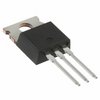-
A good PCB layout for optimal thermal performance involves placing the device near a thermal pad or a heat sink, using thermal vias to dissipate heat, and keeping the surrounding area clear of other components.
-
To ensure reliable operation at high temperatures, ensure that the device is properly heatsinked, use a thermally conductive material for the PCB, and follow the recommended operating conditions and derating guidelines.
-
Exceeding the maximum junction temperature can lead to reduced lifespan, decreased performance, and potentially even device failure. It's essential to ensure that the device operates within the recommended temperature range.
-
To protect the device from EOS, use a robust PCB design, ensure proper voltage regulation, and add protection circuits such as TVS diodes or zener diodes to absorb voltage spikes.
-
The recommended soldering conditions for the STTH806D involve using a soldering iron with a temperature of 250°C to 260°C, and a soldering time of 3 to 5 seconds.
 STTH806D datasheet
by STMicroelectronics
STTH806D datasheet
by STMicroelectronics
Findchips
 STTH806D datasheet
by STMicroelectronics
STTH806D datasheet
by STMicroelectronics
 Findchips
Findchips